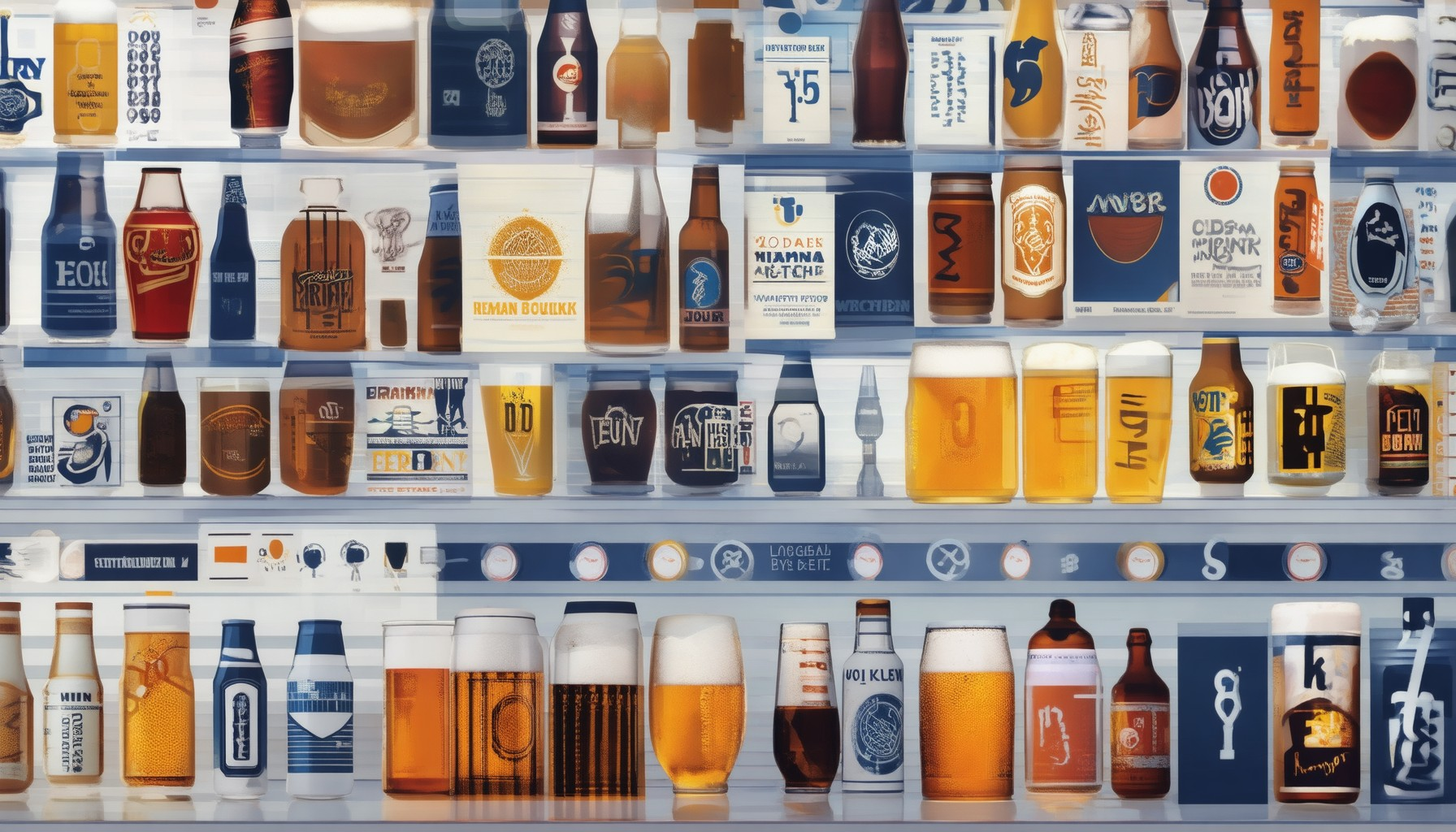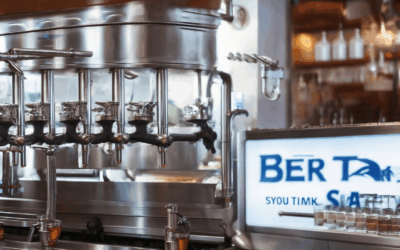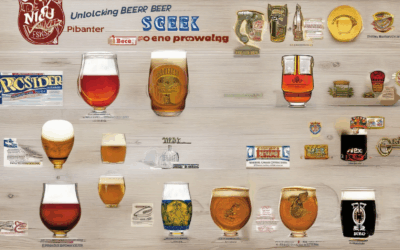Understanding the psychographics of beer consumers is a powerful tool for brewers, marketers, and industry leaders aiming to tap into one of the most dynamic and evolving markets today. Beer consumption is not just about taste—it’s deeply tied to personal preferences, cultural habits, and even emotional connections. Whether it’s the casual Friday night drink or a premium craft beer shared at a special occasion, beer plays a unique role in people’s lives. This article dives into the intricacies of beer psychographics, exploring how understanding the motivations, preferences, and behaviors of beer consumers can revolutionize your marketing strategies. From identifying the target audience to leveraging demographic insights and market segmentation, we’ll uncover how psychographics can help you craft campaigns that resonate on a deeper level. Join us as we dissect the latest trends, case studies, and actionable strategies that are shaping the future of beer marketing.

Who Is The Target Audience For Beer?
The target audience for beer encompasses a diverse group of individuals with varying preferences, demographics, and lifestyle choices. Here’s a breakdown of the primary segments:
- Demographics:
- Millennials (25-34 years old) remain a significant group, contributing around 35% of craft beer consumption in the U.S.
- Women make up approximately 31% of craft beer consumers, reflecting a growing interest among female drinkers.
- Gen Z, particularly those aged 18-24, is emerging as a key demographic, influenced by social media and a preference for unique, flavorful beers.
- Income Level:
- Higher-income individuals, particularly those in middle to upper-income brackets, are more likely to purchase premium and craft beers.
- Geographic Location:
- Urban and suburban areas tend to have higher beer consumption rates due to greater access to craft breweries and diverse bar options.
- Cultural Factors:
- Beer is often consumed socially, making it popular among individuals who enjoy dining out, attending events, or gathering with friends.
- Festivals, sports events, and food pairings further drive beer consumption, appealing to a broad audience.
- Preferences:
- Enthusiasts of craft beer, who seek unique flavors and local brews, form a passionate segment of the audience.
- Casual drinkers may prefer mainstream lagers or well-known international brands.
- Evolving Landscape:
- Health-conscious individuals are increasingly drawn to low-calorie or flavored beers, expanding the audience beyond traditional beer drinkers.
Demographics of Beer Consumers
The demographics of beer consumers vary widely, reflecting diverse preferences and cultural contexts. Here’s a breakdown of key characteristics:
- Age: Beer consumers typically span a broad age range, with a significant majority falling between 18 and 34 years old. Younger adults often explore craft beers, while middle-aged individuals (35-55) tend to prefer traditional lagers or ales.
- Gender: Men dominate beer consumption, representing approximately 60% of drinkers globally. However, women are increasingly participating in craft beer culture, particularly among younger generations.
- Education Level: Beer consumers span all educational backgrounds, with a notable presence among both college-educated individuals and those without formal education. Craft beer, in particular, appeals to a mix of demographics.
- Income Level: Beer consumption is prevalent across income brackets, though it is more common among individuals with annual household incomes ranging from $40,000 to $100,000. Higher-income earners may opt for premium or craft beers.
- Regional Preferences: Consumer preferences can vary significantly by region. For instance, lagers and pilsners are popular in Central Europe, while India Pale Ales (IPAs) and sour beers are favored in North America and Australia.
Understanding these demographics helps businesses tailor their marketing strategies to target specific audiences effectively. Whether through social media campaigns, local partnerships, or personalized packaging, catering to these diverse consumer profiles can enhance brand reach and customer satisfaction.

What is the Segmentation of Beer?
The segmentation of beer is a process that categorizes the market based on various criteria to better understand consumer preferences and industry dynamics. Here’s a breakdown of the primary segments:
By Type
Beer can be categorized into several types based on its style and flavor profile:
- Lager: Known for its crisp and clean taste, lagers are the most widely consumed beer type globally.
- Ale: Characterized by fruity and spicy notes, ales come in a variety of styles ranging from session IPAs to robust porters.
- Stout & Porter: These dark beers feature rich flavors of roasted malt and coffee, often paired with chocolate notes.
- Malt: Sweet and malty beers, often with low bitterness, appeal to those who enjoy a sweeter taste profile.
- Others: Includes experimental and niche styles that don’t fit into the traditional categories.
By Category
The beer market is further segmented by price point, catering to different consumer budgets and preferences:
- Popular-Priced: Budget-friendly beers that offer good value and accessibility, perfect for everyday consumption.
- Premium: Mid-range beers that balance quality and affordability, often with unique flavor profiles.
- Super Premium: High-end beers that command a premium price due to their craftsmanship and rarity.
By Packaging
Beer is available in various packaging options to suit different needs and preferences:
- Cans: Lightweight and portable, cans are ideal for outdoor activities and have become increasingly popular.
- Bottles: Offer versatility in terms of size and storage, with options ranging from single servings to large bottles.
- Draft: Served on-tap, draft beer retains its freshness and flavor, appealing to both casual drinkers and connoisseurs.
- Kegs: Ideal for businesses or events requiring large quantities, kegs are a common choice for bulk purchases.
By Region
The global beer market is influenced by regional preferences and production capabilities:
- North America: Dominated by lagers and pale ales, the region has a strong craft beer scene.
- Europe: Home to centuries-old traditions, European beer production emphasizes quality and heritage.
- Asia-Pacific: Rapidly growing markets like China and India are driving demand for premium and craft beers.
- Latin America: Countries like Brazil and Mexico have strong local beer cultures supported by large breweries.
- Middle East & Africa: The region is experiencing growth in premium and craft beer consumption.
This segmentation allows brewers and retailers to tailor their offerings to meet specific consumer demands, ensuring that every beer enthusiast finds something to enjoy.

The 3:30-300 Rule for Beer
The 3:30-300 rule is a simple guideline for enjoying beer optimally. Here’s a breakdown:
- Serving Temperature (3:30): Serve most beers at a temperature of around 21°C (70°F), which corresponds to the time around 3:30 PM when the temperature is ideal for many beer styles, particularly lagers and pilsners.
- Freshness (300 Minutes): Consume your beer within approximately 5 hours (300 minutes) of opening it to preserve its flavor and aroma. This ensures you’re enjoying the beer at its freshest state.
This rule helps ensure your beer tastes as it was intended to be enjoyed, whether it’s a crisp lager or a rich stout. Always check the specific recommendations for the beer you’re drinking, as preferences can vary by style.
What is the 80/20 Rule for Beer?
The 80/20 rule for beer refers to a sales analysis method where 80% of sales volume comes from 20% of the product SKUs (Stock Keeping Units). This principle highlights the importance of focusing on high-selling products to optimize inventory management and reduce costs. In the context of brewing and retail, it emphasizes that a small number of popular beers can account for the majority of sales, making it crucial for brewers and retailers to prioritize these top-performing SKUs.
Key takeaways:1. Focus on High-Selling SKUs : Identify the 20% of SKUs contributing to 80% of sales to maximize profitability and minimize inventory holding costs.2. Streamline Inventory Management : By concentrating efforts on these top performers, businesses can reduce stockouts and overstock issues.3. Leverage Data Insights : Regularly analyze sales data to adjust production and purchasing decisions based on consumer preferences.
This approach helps breweries and retailers allocate resources effectively, ensuring that popular demand is met while optimizing operational efficiency.

The 6 Beer Rule Explained
In certain luxury resorts located in Majorca and Ibiza, Spain, there is a popular rule referred to as the “6 beer rule.” This regulation limits guests to a maximum of six alcoholic beverages per day, with three allowed during lunch and three during dinner. The purpose of this rule is to promote responsible drinking and ensure guest safety while enjoying the resort’s amenities.
Key Points of the 6 Beer Rule:
- Daily Limit: 6 alcoholic drinks per guest, divided equally between lunch and dinner.
- Timing: Three drinks are allocated for the afternoon and three for the evening.
- Exceptions: Some luxury packages may offer slightly higher limits, but the standard rule remains six drinks per day.
Why the 6 Beer Rule Was Implemented:
The 6 beer rule was introduced to manage alcohol consumption effectively, particularly in high-end resorts where excessive drinking could lead to health risks or disorderly conduct. By setting clear boundaries, resorts aim to maintain a safe and enjoyable environment for all guests.
Impact on Tourists:
This rule applies primarily to all-inclusive packages and may come as a surprise to some visitors. However, it is intended to prevent overconsumption and ensure that guests can fully enjoy the resort’s facilities without negative consequences.
Conclusion:
The 6 beer rule is a thoughtful measure implemented by select resorts in Majorca and Ibiza to promote responsible alcohol use. By adhering to these guidelines, guests can make the most of their vacation while ensuring their safety and well-being.





0 Comments